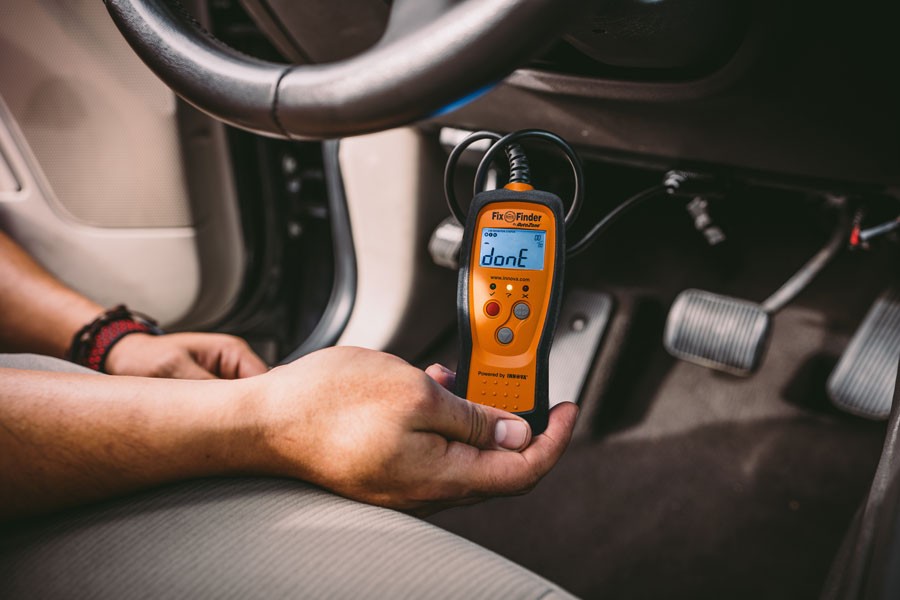Connecting an OBD2 scan tool might seem daunting, but it’s a straightforward process that can empower you to understand your car’s health. This guide will walk you through each step, from locating the OBD2 port to interpreting the codes.
Locating the OBD2 Port
The OBD2 port, a 16-pin trapezoidal connector, is typically located under the driver’s side dashboard. However, it can sometimes be hidden in the center console or under the passenger side dash.
Connecting the OBD2 Scanner
- Turn Off the Ignition: Ensure your car’s ignition is switched off before connecting the scanner.
- Connect the Scanner: Align the scanner’s connector with the OBD2 port and firmly push them together. A slight wiggle might be needed for a secure connection.
- Turn the Ignition On: Turn the ignition key to the “on” position, but do not start the engine. This powers up the OBD2 port and the scanner.
- Wait for Initialization: Allow the scan tool to boot up and complete its initialization sequence.
- Enter Vehicle Information: The scanner may prompt you to input vehicle-specific information like the VIN, engine size, or fuel type.
Navigating the OBD2 Scanner Menu
Once booted, the scanner displays a menu with various options:
- Read Codes: Displays Diagnostic Trouble Codes (DTCs) indicating potential issues.
- Erase Codes: Clears stored DTCs after repairs are completed.
- Live Data: Provides real-time sensor readings, allowing you to monitor various parameters.
- Freeze Frame: Captures vehicle data at the moment a DTC was set.
- Vehicle Info: Shows vehicle-specific information like VIN and engine details.
- I/M Readiness: Indicates if the vehicle’s emission system is ready for inspection.
Use the buttons on the scanner to navigate the menu and select the desired function.
Understanding OBD2 Codes
DTCs follow a specific format: a letter followed by four numbers (e.g., P0301).
-
Letter: Indicates the system:
- P: Powertrain (engine, transmission, emissions)
- B: Body (airbags, interior systems)
- C: Chassis (suspension, steering)
- U: Network communication
-
Numbers:
- First Digit: 0 (generic code) or 1 (manufacturer-specific).
- Second Digit: System or sub-system.
- Third and Fourth Digits: Specific fault within the system.
For example, P0301 signifies a generic powertrain code related to a cylinder 1 misfire.
Using OBD2 Scanners for Cost Savings
OBD2 scanners can help you save money on car repairs by:
- Early Problem Detection: Identifying potential issues before they worsen, reducing repair costs.
- Smog Check Readiness: Verifying if your vehicle is ready for emissions testing.
- DIY Repairs: Diagnosing and fixing simple issues yourself, avoiding expensive mechanic visits.
Conclusion
Understanding How To Use An Obd2 Scan Tool is a valuable skill for any car owner. By following this guide, you can gain insights into your vehicle’s health, potentially save on repairs, and become a more informed car owner. Using an OBD2 scanner empowers you to address minor issues before they become major problems.

